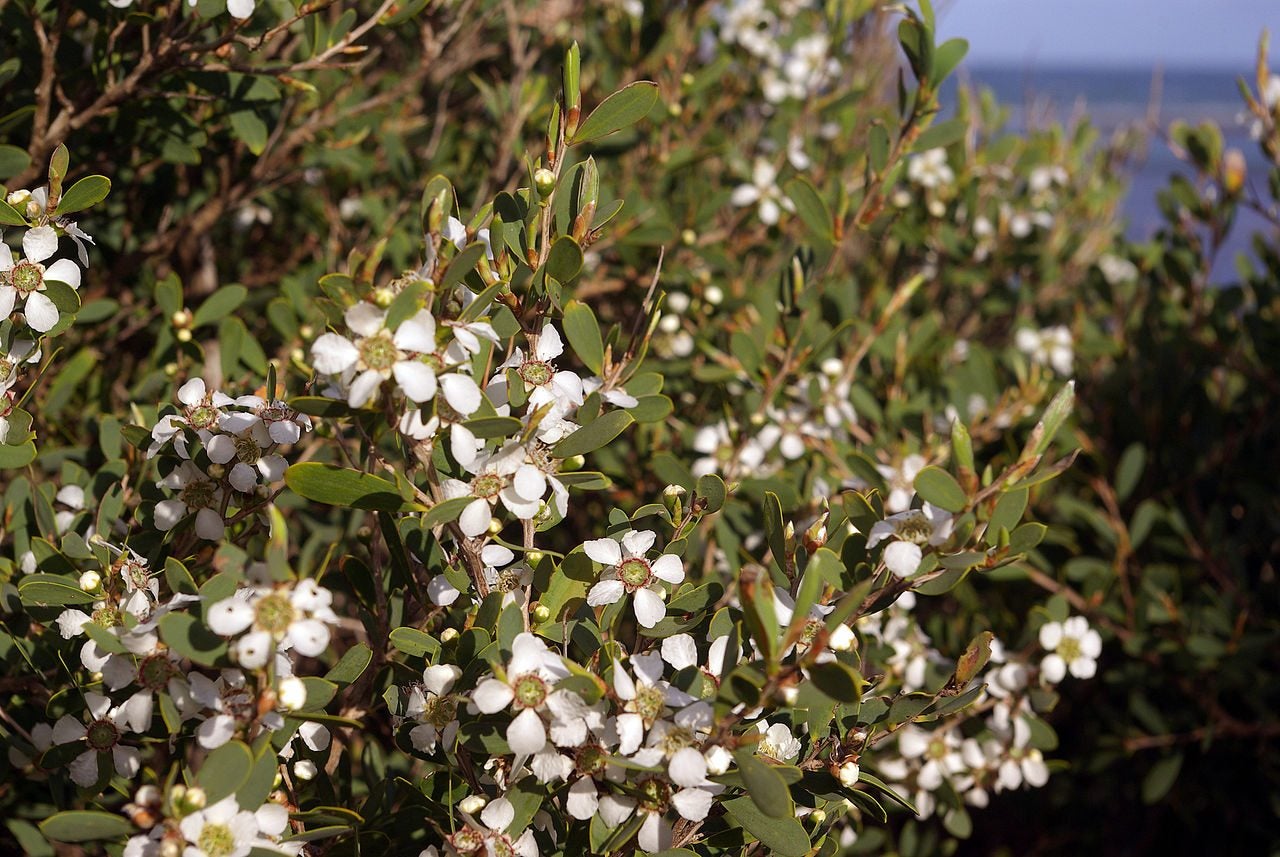Australian Tea Tree Info: Tips For Growing An Australian Tea Tree


Native to eastern Australia, Australian tea tree plant (Leptospermum laevigatum) is a graceful evergreen shrub or small tree valued for ability to grow in difficult conditions, and for its twists and curves, which give the tree a natural, sculptured appearance. Australian tea tree plant is also known as Australian myrtle, or coastal tea tree. Want to learn about growing an Australian tea tree? It’s easy; just keep reading to find out!
Australian Tea Tree Information
Australian tea tree plants are suitable for growing in USDA plant hardiness zones 9 through 11. Although mature height depends on the species, Australian tea tree plants in the garden generally reach heights of 10 to 25 feet (3-8 m.). Australian tea tree displays small, leathery, bluish gray leaves and gray bark that adds to its textural appearance. Lovely apple blossom-like flowers bloom in early spring. Australian tea tree plants are drought tolerant once established, withstanding wind and poor, sandy soil. Australian tea tree is a great choice for a seaside environment.
How to Grow Australian Tea Trees
Australian tea tree plants thrive in either full or partial sunlight. Although the tree adapts to most soil types, it prefers fast-draining sandy or loamy, somewhat acidic soil. Hard-packed or heavy clay soil are best avoided. Smaller varieties, which work well for hedges, can be planted as close as 3 to 6 feet (1-2 m.); however, large varieties need 15 to 20 feet (5-6 m.) of spreading out space but responds well to trimming. Australian tea tree care is easy enough. When growing an Australian tea tree, it benefits from a deep watering every week during the first summer – as a general rule, saturate the soil to a depth of 6 to 15 inches (15-38 cm.). Once the tree is established, it requires no supplemental water, although it benefits from an occasional irrigation during extended periods of hot, dry weather. Don’t worry about feeding your Australian tea tree, as too much fertilizer can damage the tree. If growth seems slow or you think the tree needs fertilizer, apply a light application of a water-soluble fertilizer every month during the growing season, using a solution of no more than ½ teaspoon (2.5 ml.) of fertilizer per gallon (4 L.) of water. Never feed the tree after late summer. Note: Some Australian tea tree varieties can become invasive in certain areas. If you live in California, for example, check with your local cooperative extension office before planting. If you want to limit spreading growth in your garden, rake up seed pods that fall on the ground. If the tree is small, remove flowers before they go to seed.
Sign up for the Gardening Know How newsletter today and receive a free copy of our e-book "How to Grow Delicious Tomatoes".

A Credentialed Garden Writer, Mary H. Dyer was with Gardening Know How in the very beginning, publishing articles as early as 2007.